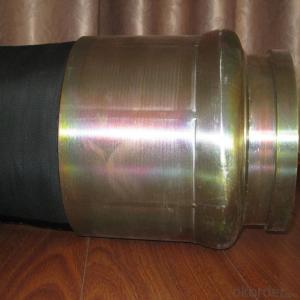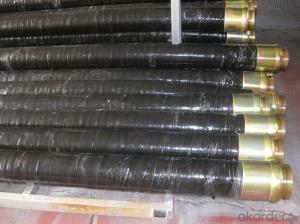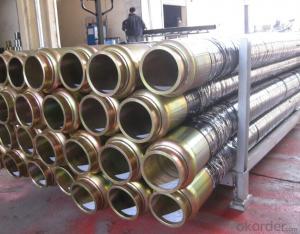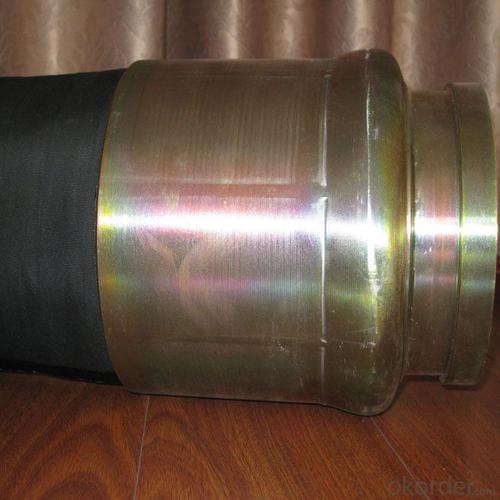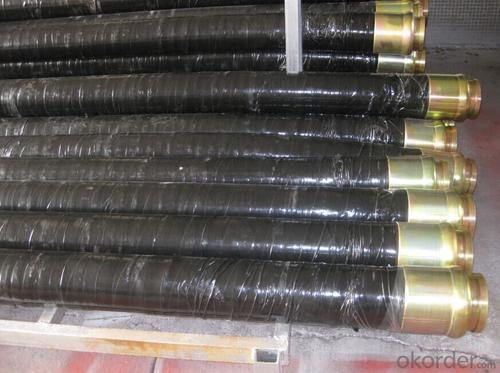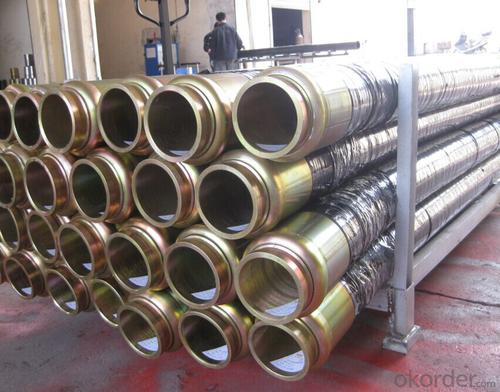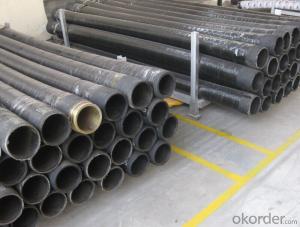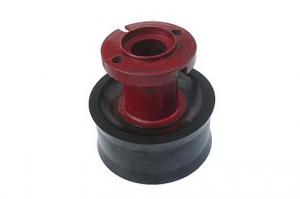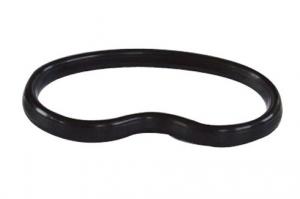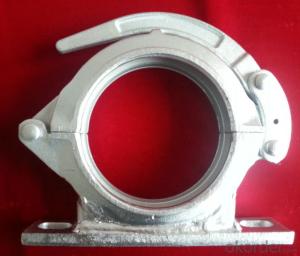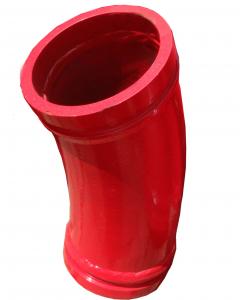Rubber End Hose with OneTwo Side Couplings Working Pressure 85 Bar 5M*DN80
- Loading Port:
- Shanghai
- Payment Terms:
- TT OR LC
- Min Order Qty:
- 10 pc
- Supply Capability:
- 5000 pc/month
OKorder Service Pledge
OKorder Financial Service
You Might Also Like
Product Description:
The 5M*DN80 rubber end hose with two side couplings, normally the hoes is made by NR and reinforced by four layer steel wire, and the two couplings at each side are made by steel material No.ST52, 20#, 37MN5, with hot treatment according to customer’s requests, and also package in bundles or nude packing directly put into container.
Scope of Application of the hose
The 5M*DN80 rubber end hose is a concrete delivery for combined use with other concrete pipelines in concrete placement operations. It can be widely used in the construction of various types of concrete structures like industrial and civil buildings, bridges, roads, and other types of infrastructure.
This end hose can only be used in concrete construction operations, but not in any other operations, like dragging, moving, or hoisting heavy articles or personnel. The end hose is also not allowed to be used in any location where any combustible or explosive material exists or a cave-in may occur.
Product Advantages:
OKorder's 5M*DN80 rubber end hose Channels are durable, strong, and safety. We are the biggest group in this business filed and the majority resources are under our control, which is make sure the delivery time and qualified products, meanwhile we have more than 20 overseas branches our people will go to visit customer very fast for more convenient communication.
Main Product Features:
· Premium quality
· Prompt delivery & seaworthy packing (5-10 days)
Reliable performance
· Competitive pricing
Measuring of wall thickness from the outside
FAQ:
Q1: How long about delivery time?
A1: Normally we keep the raw materials for old customers and sometime we also keep stock products to make sure delivery time in any emergency cases.
Q2: How soon can we receive the product after purchase?
A2: Within three days of placing an order, we will book the vessel for goods. The specific shipping date is dependent upon international and government factors, but is typically 7 to 30 workdays.
Q3: How to make a quick resolution for after service?
A3: OKorder and our manufacture both have overseas branches all-around of world, if needed,
Name | Concrete Pump Rubber Hose | |||||
Size | ID | OD | Number of layer | Work pressure | bursting pressure | weight |
3.5" | 113 | 2 | 1200psl | 3000psl | 6.8kg/m | |
4" | 128 | 2 | 1200psl | 3000psl | 7.8kg/m | |
5" | 154 | 2 | 1200psl | 3000psl | 10kg/m | |
5" | 154 | 4 | 1200psl | 3000psl | 12kg/m | |
6" | 181 | 2 | 1200psl | 3000psl | 15kg/m | |
Other size and types upon request | ||||||
Usual Size | 4"-DN80, 5" -DN125, 6"-DN150 | |||||
Material | natrual rubber,steel wire | |||||
Technic | steel wire weaving,composite molding | |||||
Application | used in concrete transport of concrete pump end in construction work | |||||
Serving Brands Of Mounted Truck Concrete Pump And Concrete Pump | SANY,Zoomlion,PM,CIFA and so on | |||||
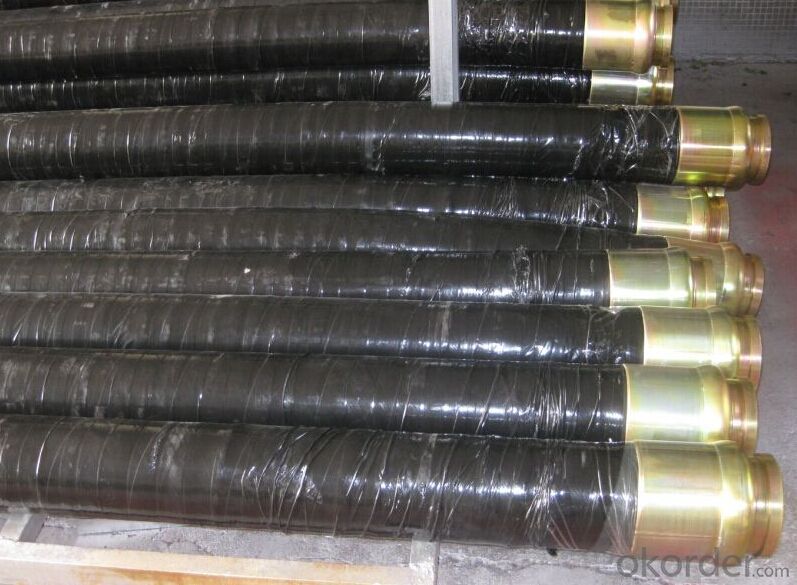
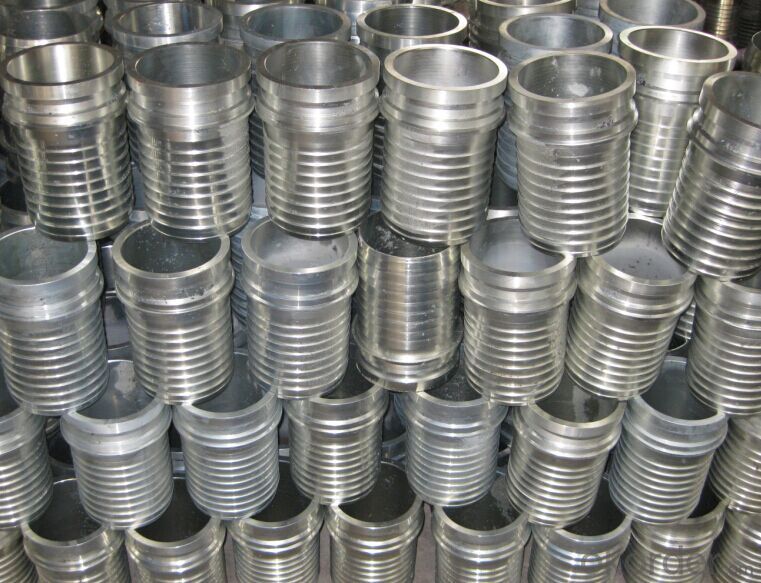
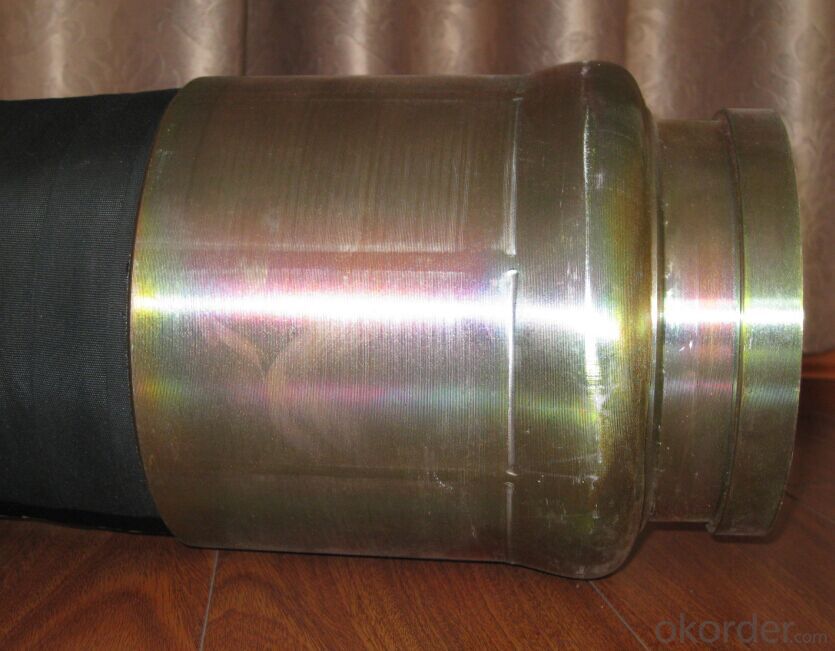
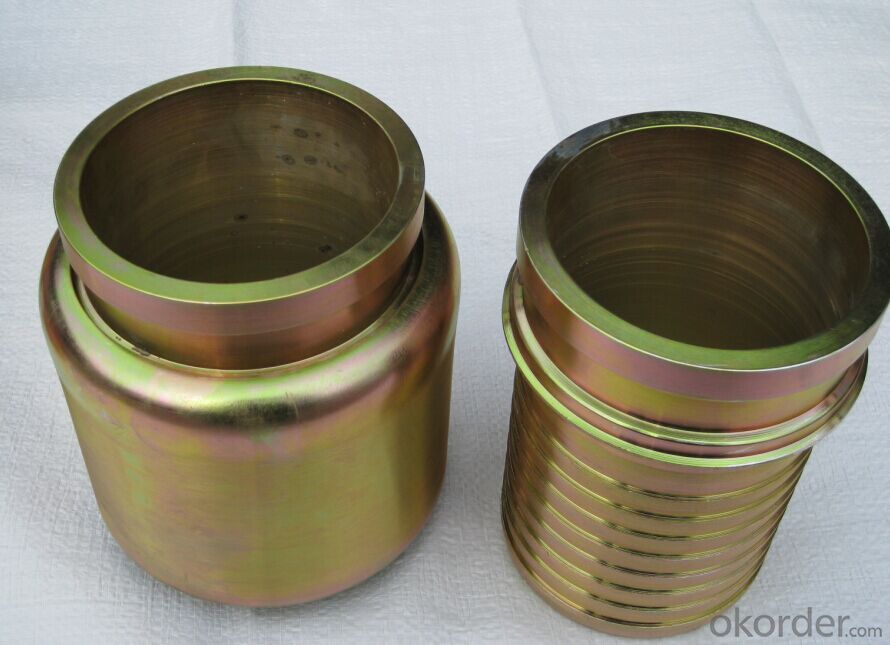
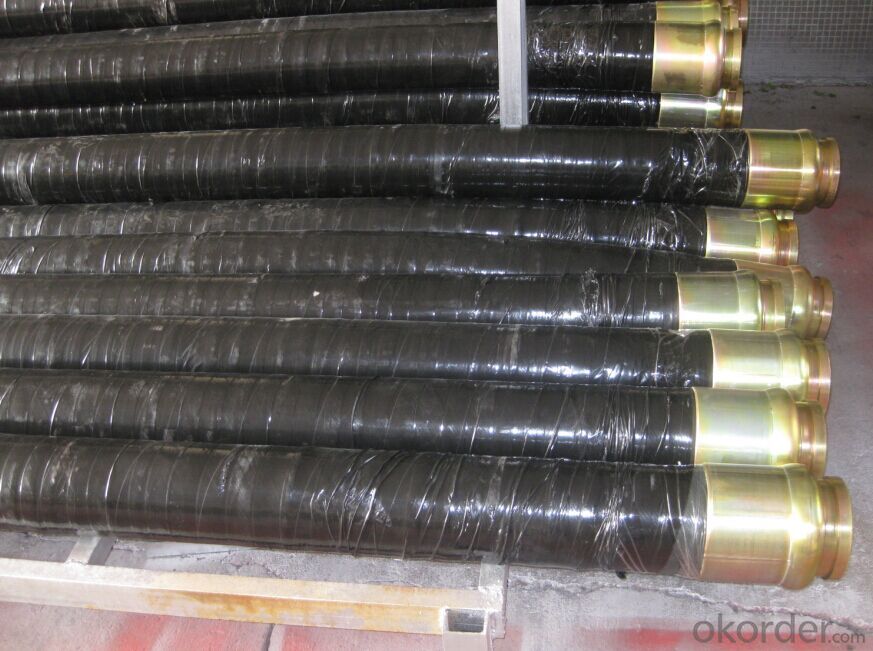
- Q: Are there any special tools required for replacing concrete pump spare parts?
- Special tools are necessary for replacing concrete pump spare parts. The required tools differ based on the specific part being replaced. However, some commonly used tools include wrenches, sockets, hydraulic jacks, cranes or hoists, and torque wrenches. Certain parts may also necessitate specialized tools like concrete saws, chisels, or drills to remove old parts or prepare surfaces for installation. To ensure proper replacement of concrete pump spare parts, it is crucial to refer to the manufacturer's guidelines or seek professional advice.
- Q: How often should concrete pump pressure gauges be inspected and replaced?
- Regular inspections of concrete pump pressure gauges are necessary to ensure they are accurate and functioning properly. The frequency of inspections and replacements may vary depending on the specific conditions and usage of the pump. However, it is generally recommended to inspect and replace pressure gauges at least once a year or after every 500 pumping hours, whichever comes first. This regular schedule helps prevent any potential accuracy or functionality issues that could impact the safety and efficiency of the pumping operations. It is also essential to adhere to the manufacturer's recommendations and guidelines for pressure gauge maintenance and replacement to maintain optimal performance and longevity.
- Q: How can one extend the lifespan of concrete pump spare parts?
- One can extend the lifespan of concrete pump spare parts by ensuring regular maintenance, proper lubrication, and cleaning after each use. Additionally, using high-quality spare parts and avoiding overloading or excessive pressure on the pump can also help prolong their lifespan.
- Q: How often should concrete pump booms be inspected and maintained?
- Concrete pump booms should be inspected and maintained regularly to ensure safe and efficient operation. The frequency of inspections and maintenance will depend on the usage and working conditions of the concrete pump boom. Generally, it is recommended to inspect and maintain the boom at least once every month or after every 250 pumping hours, whichever comes first. During these inspections, it is important to check for any signs of wear and tear, damage, or malfunctioning parts. The boom's hydraulic system, including the hoses, cylinders, and valves, should be thoroughly inspected and tested for any leaks, blockages, or malfunctions. The boom's structural integrity, including the main boom, articulation points, and outriggers, should also be inspected for any cracks, deformations, or signs of stress. Regular maintenance of the concrete pump boom should include cleaning and lubricating all movable parts, checking and adjusting the tension of the cables, belts, and chains, as well as inspecting and replacing any worn-out or damaged components. The boom's electrical and control systems should also be inspected and tested to ensure proper functioning. In addition to regular inspections and maintenance, it is crucial to follow the manufacturer's guidelines and recommendations for specific maintenance intervals and procedures. It may be necessary to perform more frequent inspections and maintenance if the concrete pump boom is subjected to heavy usage, harsh working conditions, or if there are any significant changes in the performance or operation of the boom. By conducting regular inspections and maintenance, concrete pump boom owners can minimize the risk of accidents, prolong the lifespan of the equipment, and ensure that it operates at its optimal performance level. It is always advisable to consult with the manufacturer or a qualified professional to determine the most appropriate inspection and maintenance schedule for a specific concrete pump boom.
- Q: What are the fittings of concrete pump?
- The commonly used electrical accessories (button switch, switch, trip circuit breaker, transformer terminals, etc.), hydraulic pipe
- Q: How do I properly maintain and replace rubber pistons in concrete pump spare parts?
- Proper maintenance and replacement of rubber pistons in concrete pump spare parts involves a few key steps. Firstly, make sure to regularly inspect the pistons for any signs of wear, such as cracks or tears. It is recommended to replace them if they are significantly worn or damaged. To replace the rubber pistons, start by removing the old piston carefully, ensuring not to damage the cylinder or any other components. Clean the cylinder thoroughly, removing any debris or residue. Apply a lubricant or concrete pump primer to the cylinder walls to aid in the installation of the new piston. Next, carefully install the new rubber piston, ensuring it is properly aligned with the cylinder. Gently push it into place, avoiding any unnecessary force that could cause damage. It is important to refer to the manufacturer's instructions or guidelines for specific installation techniques. After replacing the rubber piston, run a few tests to ensure its proper functioning. Check for proper sealing and smooth operation by conducting a dry run or pumping a small amount of concrete. Monitor the piston's performance closely, and if any issues arise, consult a professional or the manufacturer for further guidance. Regular maintenance, such as cleaning the cylinder and lubricating the pistons, can help extend their lifespan. Additionally, following proper operating procedures, such as avoiding excessive pressure or abrasive materials, can also contribute to the longevity of rubber pistons.
- Q: How can a malfunctioning control lever affect the pump's operation?
- The pump's operation can be significantly affected in several ways by a control lever that is malfunctioning. To begin with, the control lever is responsible for regulating the flow rate and pressure of the pump. If it is not functioning properly, it may be unable to accurately adjust these parameters, resulting in the pump not working correctly. Additionally, the ability of a malfunctioning control lever to effectively turn the pump on or off may be compromised. This can lead to the pump running continuously, even when it is unnecessary, causing unnecessary wear and tear on the pump and increased energy consumption. Furthermore, the control lever is often used to control the direction of flow in the pump. If it is not functioning correctly, it may be unable to switch the pump between forward and reverse modes, impacting the pump's efficiency in performing its intended tasks. Moreover, the overall safety of the pump operation can be affected by a malfunctioning control lever. If the lever fails to respond or becomes stuck in a position, it can potentially result in over-pressurization, leaks, or other hazardous situations, putting both the pump and surrounding equipment or personnel at risk. In conclusion, a control lever that is malfunctioning can disrupt the accurate regulation of flow rate, pressure, and direction of flow in the pump, potentially leading to improper functioning, increased energy consumption, reduced efficiency, and safety hazards. Therefore, it is crucial to promptly address any issues with the control lever to ensure the reliable operation of the pump.
- Q: How to judge the concrete pipeline blockage?
- Listen to the ear, there is rustling sound as normal, there is a piercing sound for the blockage
- Q: How can one determine the correct weight and balance requirements for concrete pump spare parts?
- To ascertain the appropriate weight and balance specifications for concrete pump spare parts, several factors must be taken into account. First and foremost, consulting the manufacturer's specifications and guidelines specific to the concrete pump model is of utmost importance. These documents typically contain comprehensive information regarding the weight and balance requirements for each spare part. Secondly, it is essential to comprehend the function and purpose of each spare part. Different components vary in weight and can significantly impact the overall balance of the pump. For example, larger elements like booms or outriggers may necessitate precise weight distribution to ensure operational stability. Moreover, considering the intended usage and environmental conditions of the concrete pump is imperative. If the pump is expected to operate in challenging terrains or extreme weather, additional weight might be necessary to enhance stability. In addition to the manufacturer's guidelines, seeking counsel from experts or engineers knowledgeable about concrete pumps can provide invaluable insights. These professionals can analyze the specific requirements of the pump and offer guidance on the appropriate weight and balance specifications for the spare parts. Lastly, conducting thorough testing and inspections after installing any spare parts is crucial. This ensures compliance with the weight and balance requirements and allows for any necessary adjustments to be made. In conclusion, determining the correct weight and balance requirements for concrete pump spare parts necessitates a combination of understanding manufacturer guidelines, considering the purpose and conditions of the pump, seeking expert advice, and performing comprehensive testing and inspections.
- Q: What is the function of a concrete pump remote control antenna?
- The function of a concrete pump remote control antenna is to establish a wireless connection between the remote control device and the concrete pump. This allows the operator to remotely control the various functions of the concrete pump, such as starting and stopping the pump, adjusting the speed and flow of the concrete, and controlling the boom movements. The antenna receives signals from the remote control device and transmits them to the concrete pump, enabling the operator to control the pump from a safe distance. This helps improve efficiency, accuracy, and safety on construction sites by allowing the operator to have better visibility of the pump and its surroundings while still maintaining full control over its operations.
Send your message to us
Rubber End Hose with OneTwo Side Couplings Working Pressure 85 Bar 5M*DN80
- Loading Port:
- Shanghai
- Payment Terms:
- TT OR LC
- Min Order Qty:
- 10 pc
- Supply Capability:
- 5000 pc/month
OKorder Service Pledge
OKorder Financial Service
Similar products
Hot products
Hot Searches
Related keywords
